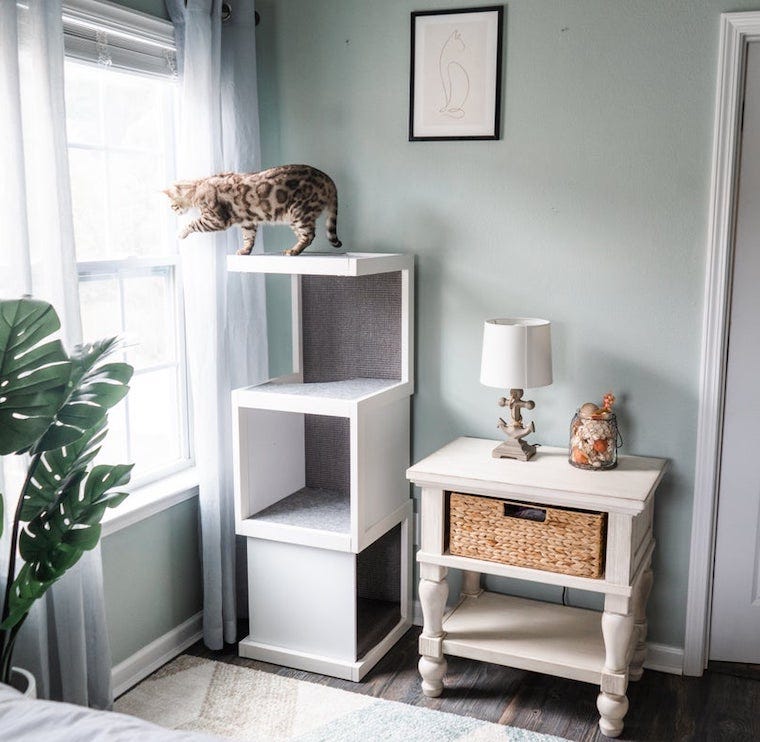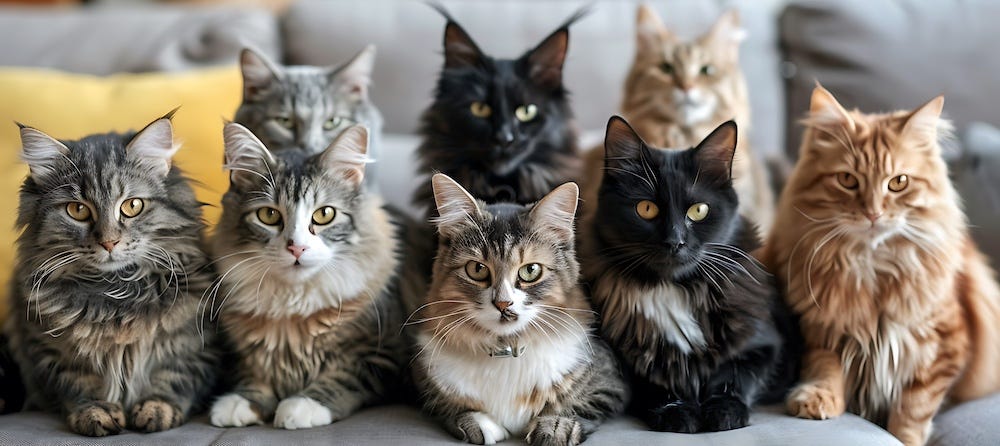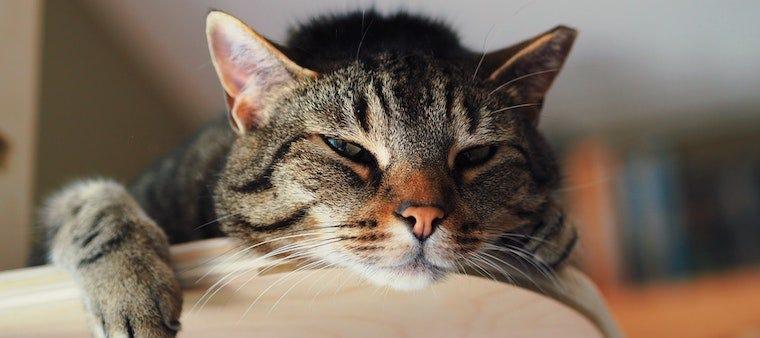Should I let my indoor cat go outside? This is one of the most highly controversial questions that even veterinary professionals will fight over. (Know that most small animal veterinarians advocate for keeping cats indoors.) People on both sides are very passionate about their opinion when it comes to indoor vs outdoor cats.
So, should cats go outside? As a veterinarian and a cat parent, I can see it from both sides. Cats that go outside can get more exercise and have more environmental enrichment. But, as an emergency critical care veterinary specialist, I will also say that I see a lot more medical problems in the ER due to a cat’s indoor/outdoor status. The short of it? Cats that go outside are more at risk of harm or injury.
Indoor vs outdoor cats
First, let’s define what “going outdoors” is. If your cat goes outside at all, your cat is considered an indoor/outdoor cat. I know it sounds basic, but I’m often shocked when people tell me that their cat is indoor only… until I ask a few more questions and then they state, “Well, he goes outside for 10 minutes a day.” Well, that’s what we define as indoor/outdoor.
Even if 90-95% of your cat’s life is indoors, we veterinarians still need to know about the small percentage of time spent outdoors. Why? Because it affects how we care for your cat and what diagnostics, vaccines, medications, and treatment we may use.
Should cats be allowed outdoors?
Personally, I choose to keep my cats indoors. But I live in an urban setting where there’s a higher incidence of trauma. Although I have a fenced-in backyard on a very large city plot, I’m still too nervous to let my cats outside because they can easily jump and climb over our tall privacy fence.
Obviously, it’s a very personal decision whether you choose to have indoor vs outdoor cats. Please weigh these important factors:
Location, location, location
The decision to let a cat outside really depends on where you live. If you live in the heart of downtown, there’s a very high likelihood that your cat is going to sustain some type of trauma. If you live on a quiet dead end in the ‘burbs, the risk of trauma is much lower.
Commitment
Once you let your cat taste the great outdoors, they’ll bolt out the door as soon as you open it. For that reason, I try to prevent my cats from tasting “freedom” to begin with! Otherwise, you’ll find yourself always opening and closing the door. And your cat meowing to be let out constantly. It’s more difficult to try to convert your cat to an indoor only cat thereafter.
Health concerns
If your cat is declawed, he or she can’t protect themselves during a cat fight or dog attack. If your cat has decreased vision or hearing, it’s also not worth the risk. And if your cat already has one of the life-threatening infectious blood diseases like FeLV or FIV, please, please, please keep them indoors so you don’t spread this to other people’s cats!
Give your cat the best indoor life

Believe it or not, cats can be just as content indoors. The biggest thing is making sure to provide environmental enrichment for each cat in your household. Remember how I mentioned that cats that go outside do get more exercise and environmental enrichment? Well, you too can provide that for indoor vs outdoor cats! This includes things like the perfect living space, such as:
- A safe, stress-free place to eat and drink
- Ocular stimulation (a cat tree to look outside on)
- Plenty of cat-friendly, cat-safe toys
- Cat grass to chew on
- The appropriate number of litter boxes (or one automatic Litter-Robot per 4 cats in the household)
- Plenty of fresh water in multiple locations
- Lots of playtime (5 minutes twice a day, please!)
Depending on how many cats you have, you want to be able to provide resources for each cat—which means you may need lots of room.
If your cat goes outside, follow these rules
If you really want your cat to experience the great outdoors, make sure to follow these recommendations (dare I say “rules”).
- Make sure your cat has a breakaway collar with a bell on it, along with an ID tag in case they are lost. Also ensure they are microchipped, as you only have to do this once in their life!
- Make sure your cat is up to date on their feline vaccines (e.g., FVRCP), including the feline leukemia (FeLV) vaccine and rabies. This includes all the other cats in the household too.
- Please keep your cat—and all the other cats in the household—on flea/tick and heartworm medication if they are exposed to a cat that goes outside.
- Supervise your cat outside the whole time—in other words, make sure you are outside with them and watch them the entire time.
- Train your cat to be on a leash and keep them supervised when outside at all times.
- Use a treat container and shake it to call your cat inside, so you can train your cat to come back when called. Choose something irresistible that they’ll come running home for!
- Make sure to only let your cat outside when you’re home, and ideally just for short periods of time. Please don’t do this overnight.
- Consider a “catio” or some type of enclosed cat net or tent.
- Provide a kitty litter box outside—no one wants your cat defecating in their yard.
- Make sure your children’s sand box is covered at all times when your cat is outside. (After all, it does look like one huge litter box!)
- No bird feeders, please. The American Bird Conservancy has great resources on the “ABC’s Cats Indoors program” on what you can do to protect both species!
Ultimately, the decision to have indoor vs outdoor cats is up to you. And I support and validate what you choose! Just weigh all the factors and make sure your cat—and all your other cats—are as protected as they can be.







